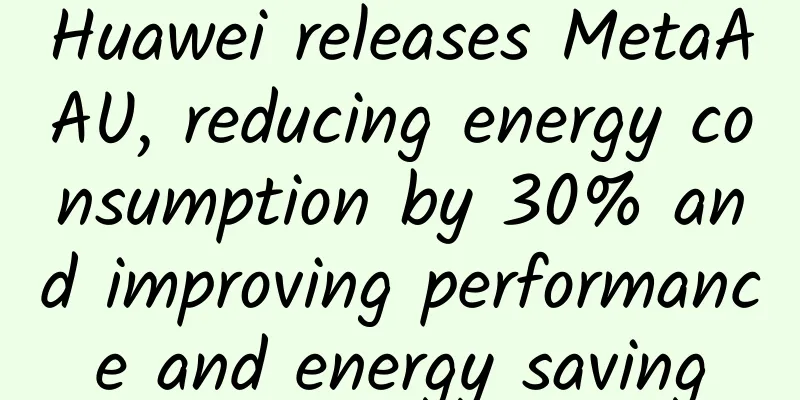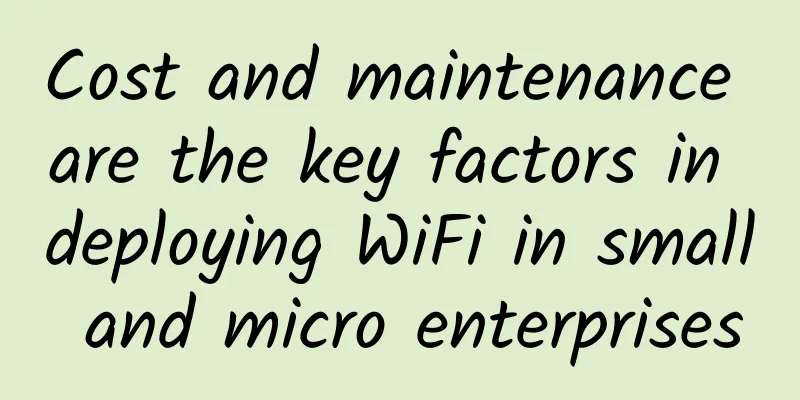Huawei releases MetaAAU, reducing energy consumption by 30% and improving performance and energy saving

|
On September 27, at the China (Beijing) International Information and Communication Exhibition, Yang Chaobin, President of Huawei's Wireless Product Line, released the Massive MIMO innovative product MetaAAU. MetaAAU introduces ultra-large-scale antenna array technology, and through algorithm, architecture, software and hardware integration innovation, it achieves dual improvements in performance and energy saving, opening up a new direction for Massive MIMO. The pursuit of lower bit cost and bit energy consumption is the driving force behind Massive MIMO's continuous innovationSince the commercialization of 5G, the medium-frequency large bandwidth combined with Massive MIMO technology has realized the original intention of 5G and brought consumers a 10-fold experience improvement. The killer experience of 5G is changing consumer habits; on the one hand, consumers use mobile networks more to access the Internet, and mobile network traffic is increasing exponentially. It is expected that mobile networks will carry more than half of Internet traffic in 2030; on the other hand, with the popularization of short videos, live streaming and other services, the development of rural digital economy, rural network traffic has grown rapidly, and the growth rate of rural mobile network traffic is higher than that of urban traffic. Yang Chaobin said: "The large bandwidth of the mid-frequency band combined with Massive MIMO technology can effectively increase cell capacity, cope with traffic growth, and reduce network bit costs. This is the foundation for China to build the best 5G network." The coverage capability of the mid-frequency band is weaker than that of the low-frequency band. The traditional solution to improve base station coverage is to increase the RF transmission power, but this can only improve downlink coverage and cannot break through the uplink coverage limitation; increasing the transmission power will also lead to an increase in module energy consumption, which conflicts with the green energy-saving goal. How to improve coverage, increase capacity, and continuously reduce network bit costs while reducing bit energy consumption is the driving force behind Massive MIMO's continued innovation. MetaAAU introduces ultra-large-scale antenna array technology, combining software and hardware to balance network performance and green energy savingThe larger the AAU antenna array, the narrower the channel beam, the more focused the channel energy, and the longer the coverage distance. MetaAAU introduces ultra-large-scale antenna arrays to improve uplink and downlink coverage without increasing the transmit power. Yang Chaobin said: "Ultra-large-scale antenna arrays are an important innovation direction for improving coverage and reducing energy consumption. MetaAAU integrates innovations in new architectures and new algorithms to achieve both network performance and green energy saving, helping operators build high-quality green 5G networks." MetaAAU introduces a new architecture, doubling the size of the antenna array, improving both uplink and downlink coverage; without increasing the transmit power, it improves the edge user experience. At the same time, the adaptive high-resolution beamforming algorithm AHR Turbo allows the service channel beam to point to the user more accurately; adaptive beam optimization intelligently adapts to user wireless channel changes to improve air interface resource utilization efficiency; high-resolution beam domain noise reduction improves multi-user pairing efficiency. AHR Turbo allows MetaAAU to "align accurately", "follow quickly", and "pair well", greatly improving user experience and cell capacity. Tests show that compared with the traditional solution, MetaAAU can simultaneously improve the uplink coverage of the cell by 30% and the downlink coverage by 30%, and the average experience of edge users can be improved by 25%. When the cell edge coverage index remains unchanged, the base station can be configured with a lower transmission power, thereby reducing the energy consumption of the base station, which is about 30% lower than the traditional AAU. Yang Chaobin concluded his speech by emphasizing: "Huawei will not stop innovating. We will continue to innovate and consolidate the wide-pipe basic network with continuous coverage. At the same time, we will continue to evolve in the areas of large uplink, large connections, and precise positioning for the future 5.5G, improve network capabilities, and contribute to China's continued leadership in 5G." |
<<: 5G is not for demonstration, but for use: my country has entered the second half of 5G
Recommend
Interviewer: Tell me what happens after you enter the URL in the address bar and press Enter?
[[401931]] This article is reprinted from the WeC...
IDC: The global enterprise WLAN market grew strongly in the second quarter of 2021, with revenue increasing 22.4% year-on-year to US$1.7 billion
[[422860]] According to IDC's quarterly globa...
Huawei presents GUIDE business blueprint at Mobile World Congress to help operators light up the digital future
During MWC22 Barcelona, Huawei, with the theme ...
Robotics and AI: The future of software testing and development
【51CTO.com Quick Translation】 About a year ago, a...
PacificRack: $8/year KVM-512MB/10GB/1TB/Los Angeles data center
PacificRack has launched the Winter Sales promoti...
Special offer of $46.6/year package for restocking, optional CN2 GIA (DC6/DC9)/Japan SoftBank, etc.
Bandwagonhost restocked its first special annual ...
LOCVPS: 400 yuan/year KVM-dual core, 4GB memory, 50GB disk, 2M/10M bandwidth, Hong Kong data center
LOCVPS has released a special offer for Hong Kong...
my country has built 718,000 5G base stations, and 5G+ industrial Internet is developing rapidly
Xiao Yaqing, Minister of Industry and Information...
Lenovo Debuts at Microsoft IoT Conference, Driving Business Intelligence Innovation with Smart IoT Devices
On December 3, the highly anticipated 2019 Micros...
Private 5G: Accelerating towards the Fourth Industrial Revolution (4IR)
Analysts report that private 5G adoption is incre...
Five reasons why the Internet of Things needs its own network
【51CTO.com Quick Translation】Last week, AT&T ...
IoT and 5G: A blessing or a curse?
The UK's recent decision to phase out Huawei ...
AWS launches 5G service, officially enters the mobile network market
Amazon Web Services (AWS) has launched the AWS Pr...
Researchers transform 5G networks into IoT power grids
According to foreign media, researchers from the ...









